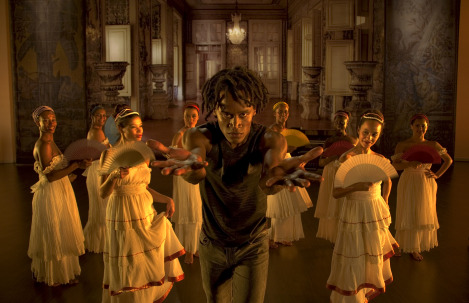Fados
Lila Downs, Ces¡ria vora, and Toni Garrido star in a film written by Ivan Dias and Carlos Saura and directed by Saura.

Spanish director Carlos Saura has both a soft spot and an unusually deep sensitivity for music, as witnessed in his intriguing cinematic tributes Tango and Flamenco (de Carlos Saura). With Fados, Saura casts a documentarian eye as well as artistic savvy on the great music of Portugal. Fado, born in the poverty-stricken areas of Lisbon alongside the influx of peasants looking for work in the early 19th century, is a dignified, passionate, and melancholic musical movement, doused in saudade (translated, loosely, as “longing”). More importantly, the music belongs to the category of great musics from humble quarters around the world, including tango, flamenco, the blues, and the Cape Verdean morna (a descendent of fado, but already well-known thanks to its queen, Ces¡ria vora, who appears in the film).
Fado is finally getting more attention due to the popularity of the elegant Mariza (who has thankfully chosen to make Santa Barbara a tour stop in recent years). Mariza is one of the many artists – in many inventive stagings and varied visual setups – that grace Saura’s film. Rather than rely on narration or other conventional doc tactics, Saura lets the music tell its story, not unlike the great gypsy documentary Latcho Drom. Fado surveys the stylistic sweep of the genre, from the traditional to more contemporary flavors, including hip-hop-infused variations. Even Mixtec heroine Lila Downs and Brazilian Caetano Veloso fit into the big picture, on a list that also includes Chico Buarque de Hollanda, Santos, and archival footage of the late, great Am¡lia Rodrigues. Saura’s film, like the music, has the effect best described in a lyric in the beginning of the film; it’s “like a lump of longing in my throat.”



